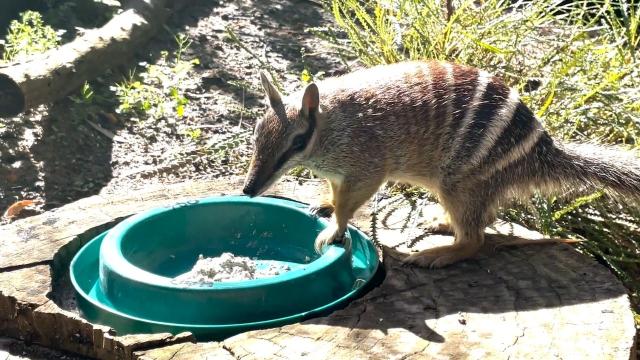For the first time ever, researchers have mapped out the Numbat genome.
The University of Western Australia, in collaboration with DNA Zoo Australia, has mapped out Numbat DNA for the first time ever, in a partnership with Perth Zoo, which provided the Numbat sample.
The sequencing will help to carry out further conservation efforts for the adorable Numbat. If you don’t know, the Numbat (often spelled without a capital) is a distinctively Australian animal, also known as a Noombat or a Walpurti. It’s an insectivore, eating only termites, kind of like an Anteater.
While the Numbat used to be widespread across Australia, it’s, unfortunately, an endangered species now, limited to a few colonies in Western Australia. It’s expected that there are less than 1,000 left in the wild.
The biggest threat to the Numbat is predation, including by introduced species like foxes and cats. Habitat loss and land clearing have also had a huge impact on dwindling Numbat numbers.
“The Numbat was on the verge of extinction during the late 20th Century, but extensive conservation efforts, as well as government and community intervention, have led to a gradually increasing population,” says Associate Professor Parwinder Kaur of UWA’s School of Agriculture and Environment.
“With less than 1,000 Numbat left in the wild, this genomic resource will open new doors for Numbat conservation efforts as well as for our scientists on the front line, fighting the very genetic diseases threatening to exterminate the Numbat.”
Previously, DNA Zoo has focused on Western Australia’s endangered native mammals, identifying more than 100 species at Perth Zoo to sample.
“The termite-eating Numbat is one of the thylacine’s closest living relatives, sharing a common ancestor ~35 million years ago. Both these enigmatic creatures have stripes, but that’s not where the similarity ends – as much as 95 per cent of their DNA may be identical,” Kaur added on the DNA Zoo website.
The hope is that harnessing the genome of the Numbat will lead to innovations in caring for it, especially for breeding the small marsupial. Kaur says it’ll bring the breeding program to the next level.
“Having a Numbat genome decoded is a pivotal step in understanding the basis of our biodiversity. It’s a critical piece of information that we require to understand how the species are evolving in these changing climates when their habitats are so fragmented and then they’re dealing with a range of different diseases and many other issues,” Kaur added.
“Maybe in the next 10 years, you know, we will be able to bring back the Thylacine.”
Perth Zoo is the only zoological institution in the world that breeds the Numbat (which it has done since 1993) with 220 bred so far and released into the wild.
Gotta love a Numbat, you go little guys.
